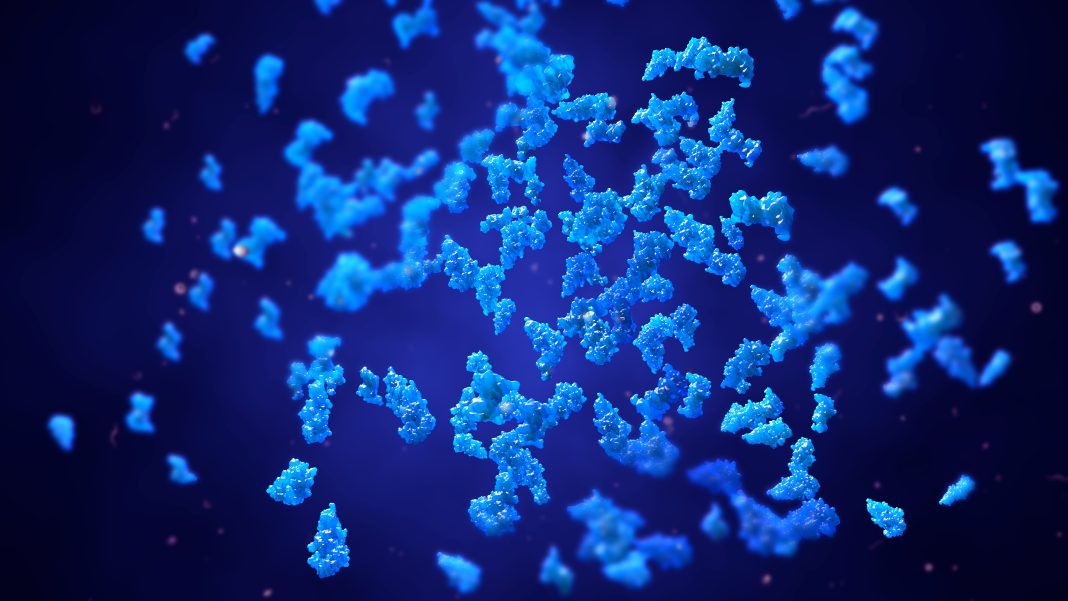Researchers have developed a new approach that allows them to “de-crowd” molecules in cells and tissues by expanding them, making the molecules more accessible to fluorescent tags such as antibodies. Using the approach, they imaged nanostructures at synapses in intact brain circuits, and they imaged Alzheimer’s-linked amyloid beta plaques from a mouse model in greater detail than has been possible before.
The work appears in Nature Biomedical Engineering (“Revealing nanostructures in brain tissue via protein decrowding by iterative expansion microscopy”). It was led by Edward Boyden, PhD, the Y. Eva Tan professor in neurotechnology at MIT, Thomas Blanpied, PhD, professor of physiology at the University of Maryland, and Li-Huei Tsai, PhD, director of MIT’s Picower Institute for Learning and Memory.
“There is great desire to understand how proteins are arranged, with nanoscale precision, within cells and tissues,” the researchers wrote in their article. “Many crowded, biomolecule-rich structures are at the core of biological functions and disease states, with inter-protein distances being smaller than the size of antibodies, which may thus prohibit access to biomolecules of interest by labels.”
Antibodies are about 10 nm long, whereas typical cellular proteins are usually about 2 to 5 nm in diameter. So if the target proteins are too densely packed, the antibodies can’t get to them.
“Overcoming this issue,” the researchers continued, “requires a technology that can not only achieve super-resolution down to the low tens of nanometers, but also enable decrowding of biomolecules in cells and tissues.”
The new approach, dubbed “expansion revealing,” is the latest iteration of a technique known as expansion microscopy. It involves expanding the samples before labeling them, allowing researchers to visualize what’s happening inside densely packed cells. In the original version of expansion microscopy, researchers attached fluorescent labels to molecules of interest before (not after) they expanded the tissue.
“The method,” they explained in their article, “involves gel-anchoring reagents and the embedding, expansion and re-embedding of the sample in homogeneous swellable hydrogels.”
The main challenge was that the researchers had to find a way to expand the tissue while leaving the proteins intact. They used heat to soften the tissue, allowing the tissue to expand 20-fold without being destroyed. Then, the separated proteins could be labeled with fluorescent tags after expansion.
Using this approach, the researchers used confocal microscopy to visualize synaptic nanocolumns, as well as nanostructures potentially of relevance to Alzheimer’s disease, in mouse brain tissue.
And they made some interesting observations. “The clustering of calcium channels in nanocolumns as we have observed here probably represents just one of many unique organizations of these ion channels to be discovered,” they wrote. “The discovery of a unique pattern of periodic depositions of ion channels in amyloid aggregates in Alzheimer’s disease mouse model brains is another example of the unexpected observations that can be made using this tool.”
Boyden and his group members are now working with other labs to study cellular structures such as protein aggregates linked to Parkinson’s and other diseases. In other projects, they are studying pathogens that infect cells and molecules that are involved in aging in the brain. Preliminary results from these studies have also revealed novel structures, Boyden said.
“Time and time again, you see things that are truly shocking,” he said. “It shows us how much we are missing with classical unexpanded staining.”



